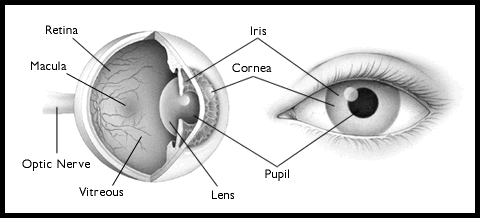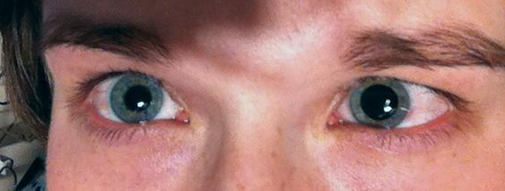The eyes of a person are the windows to their soul. Eyes are responsible for so many non-verbal cues that we give out daily when communicating with others. The structure of the eye is comprised of many different elements. One such element is the pupil. The pupil is the black opening at center of the eye that constricts or dilates in response to the amount of light the eye is exposed to. Usually both pupils are of equal size but some people have unequal pupils.

Why Do I Have One Pupil Bigger than the Other?
The medical term for this problem is anisocoria. The abnormal pupil can be either the larger or the smaller one. In the latter case, the smaller pupil has an impaired ability to dilate normally. More commonly, it is the larger pupil that cannot constrict normally. The abnormality of the larger pupil can be easily seen in bright light, when it cannot constrict in response to the bright light. Here are some possible causes.

1. Physiological Anisocoria
It is usually considered as a normal condition. The individual is born with the condition that is life-long. There is no accompanying symptom and both pupils respond normally to varying light conditions. About 20% of people have this condition. The variation in pupil size is roughly less than a 1 mm. When other members of the family have the same condition, the anisocoria is genetic. Physiological anisocoria is usually only picked up when examined by a doctor and when it is associated with no other underlying medical condition.
2. Eye Disorders
Eye disorders such as injuries to the eye or even birth defects can make you have one pupil bigger than the other. The uneven pupil size can also be due to the side effects of a medication. There are some eye drops prescribed to treat certain eye conditions that cause the pupil to dilate or constrict. Sometimes chemicals get into the eye by accident and cause one pupil to be bigger than the other, e.g. medicines used in inhalers for asthma, some insecticides, motion sickness medicines. Conditions such as glaucoma or iris inflammation can also result in uneven pupil size. The latter condition is often accompanied by severe eye pain.
3. Problems with Eye Nerves
Disorders include stroke, brain hemorrhage, brain tumors and infections can affect the nerves of the eye. Infections include meningitis and encephalitis where the brain membranes are inflamed. The pathways that carry electrical impulses from the brain to the eye structures are sometimes damaged. People with these disorders usually present with other symptoms like droopy eye. Examples of disorders that can affect the nerves of the eyes are available below:
- An example in this category would be Horner syndrome which occurs when there is an interruption in nerve impulses in the eye.
- Adie syndrome is caused when a viral infection causes nerve damage in the eye. Mostly women between the ages of 20 and 40 are affected. There is no serious damage to the eye and this condition is treated with diet and lifestyle changes. The unequal pupil size may be accompanied by low blood pressure, irregular heartbeat, a loss of normal reflexes and certain parts of the skin that are no longer able to sweat normally.
When to See a Doctor
Newly developed anisocoria can be associated with a serious medical condition. Seek medical attention when you have one pupil bigger than the other together with the following symptoms:
- Stiff neck
- Eye pain
- Vision disturbances like double, blurred vision or loss of vision
- Headaches
- Light sensitivity
- Nausea and vomiting
- Fever
- Head or eye injury
You doctor will get a full history and may order some tests to diagnose the exact cause of the anisocoria. Some of the tests include: blood tests, head MRI scan, x-rays of the neck, CT scan of the head, tonometry (to diagnose glaucoma) and EEG.
Other People's Experiences on Unequal Pupil Sizes
"I am a fifteen-year-old male. I have recently noticed that my right pupil is considerably larger than my left pupil. There is no change to my vision and my specialist said that my eyes were working just fine. Sometimes, the size differences vary and the other pupil becomes larger. I suppose this is something I will just have to get used to. I'm just afraid to look funny."
"I am 26 years old now and was born with one pupil bigger than the other. When I was a baby, my specialist examined my eyes and said that my eyesight was not affected in any way."
"About 2 years ago, I was involved in a car accident. I was badly injured. Since then my left pupil is smaller than the right pupil. At the time, the doctor said that everything was working as it should and that I should not be concerned at all. Other symptoms I experience are memory loss and intermittent hearing loss in my right ear."
"When I was younger, I contracted a viral infection in my inner ear which damaged the optic nerve. This resulted in one pupil being bigger than the other. I have noticed that when I am very tensed in my neck and shoulders, the variation in size of my pupils is even larger. I was told by my doctor that this tension can make the anisocoria even worse. I struggle with migraine headaches which I was told also cause this condition. I read somewhere that even antidepressants can have anisocoria as a side-effect."
